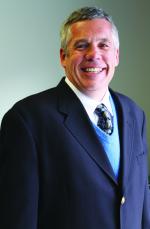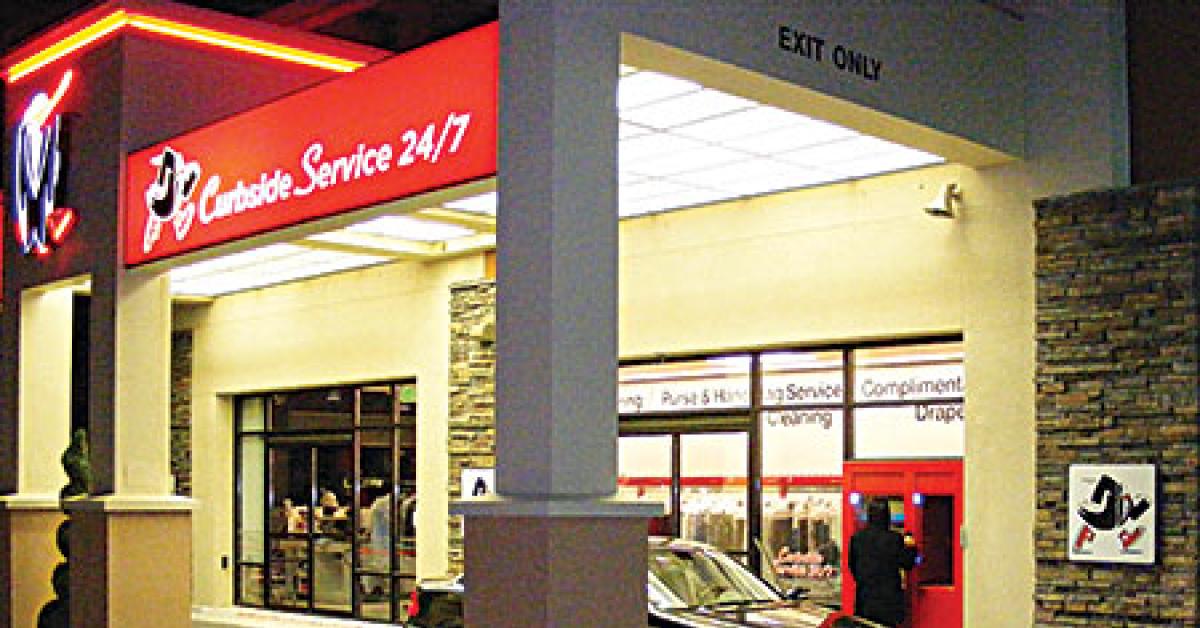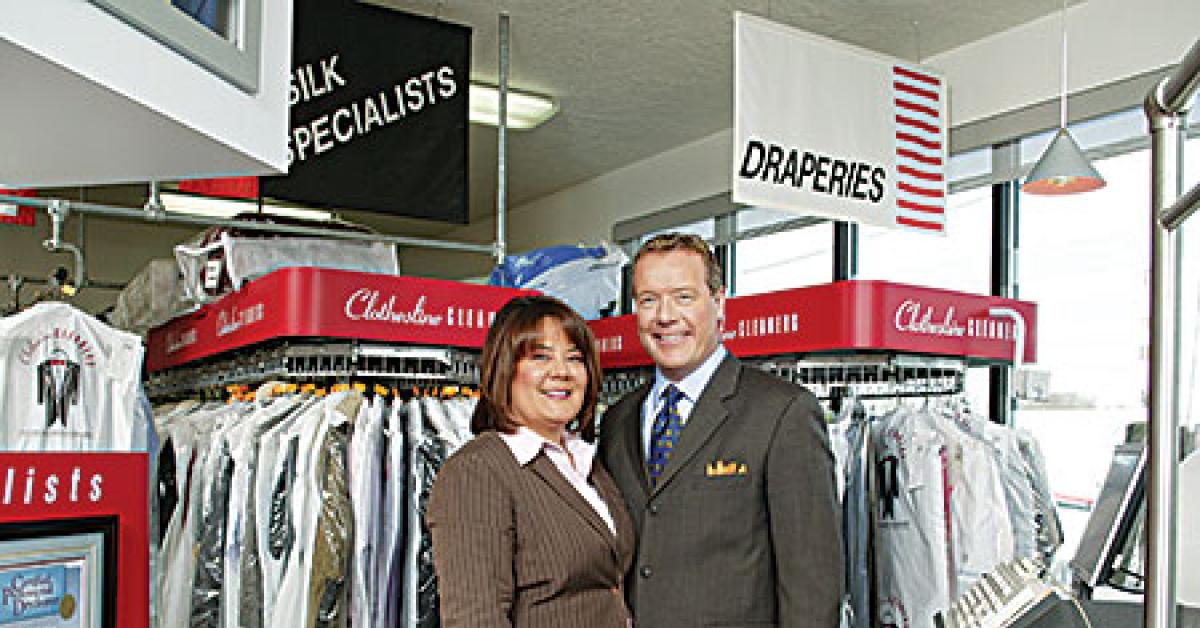CHICAGO — Well, it’s eight o’clock in Boise, Idaho
I’ll find my limo driver
Mister, take us to the show
I’ve done made some plans for later on tonight.
I’ll find a little queen
And I know I can treat her right
What’s your name, little girl?
What’s your name?
You probably know well the lyrics from Lynyrd Skynyrd’s hit tune What’s Your Name.
And you can see that even the legendary Southern rock band had convenience issues. They were pressed for time. We all are.
At 8 o’clock at night in Boise, and many other places, your customers will need dry cleaning. That’s a fact!
More and more drycleaning services are becoming available through many options. And that’s the name of this new game — omni channels.
Give your customers as many convenient ways as possible to make their life easier and more joyful. It happens with more channels and more partnerships to get the job done easier and faster for them.
Enter Gary McCracken, who, with wife Keh, owns Clothesline Cleaners in — where else? — Boise.
“Drop bins at the stores allow customers to drop off their cleaning after hours,” he says. “But the Metalprogetti 24/7 Garment Valet at our Meridian (Idaho) boutique location is the newest big attraction. The customers that use it love it! They even use it during business hours, opting for automation over personal service.”
He is describing the operation’s drive-up lane and kiosk system that enables customers to drop off and pick up their hanging orders anytime.
Convenience has always been, and will continue to be, the driving factor that brings customers into any location, McCracken says. “The more convenient we can make our service, the more likely we are to attract new business.”
But Clothesline Cleaners still has “dedicated over-the-counter traffic, as well as a very steady route business,” he adds. For over 30 years, it has been committed to providing clients with the highest quality care and finishing of garments.
But there are challenges in offering more services.
“We have seen great success in not outsourcing our work,” McCracken says. “Alterations; leather and suede, including shoes, hats, and boots (Uggs); bridal gowns; flatwork; and feather pillows are all done in-house.”
Because there is generally little competition in those specialty areas in its region, Clothesline Cleaners can set its own price point to maximize profit, he adds.
Many streams offer customers easy paddling to your services. But are you offering them?
REACH POINTS
“A customer can access cleaning services from many different channels today,” says Kyle E. Nesbit, vice president of business development at Texas’ MW Cleaners, with responsibility for brand management, marketing programs, and more.
“For example, the customer can now request cleaning services online from a desktop or mobile device, by mobile app, or by telephone, or in the traditional manner through a brick and mortar store.”
Dry cleaners, he suggests, need to realize that the experience throughout all of the channels should be seamless and integrated.
With 37 Houston area locations, MW Cleaners prides itself as a high-quality drycleaning company that specializes in wedding gown preservation, alterations and specialty cleaning, according to Nesbit.
His company opened two state-of-the-art, fully staffed, 24/7 locker stores that it calls MW Clean Closet. A third store is in development.
At the heart of the omni channel and digital crusade is the desire to become as convenient as possible.
“We will hopefully launch our mobile on-demand app this first quarter of the year,” Nesbit says. “We’ve also finalized a contract to redesign our website to make it mobile-responsive on all devices and to integrate it with SPOT POS’ web API.”
In still other channels, his company offers locker services in office buildings.
But he notes there are challenges to finding the right mix of tenants in multi-tenant buildings, where casual dress, security and privacy concerns, and just the location of the lockers are all “major stumbling blocks.”
Single-tenant buildings have proven to be far more lucrative, he points out.
“Because management tends to view the locker service as both an employee benefit as well as a way to increase productivity by making work schedules more flexible, they are more prone to promoting it,” says Nesbit.
Multi-family properties can be a mix of both challenges and successes, he says. “Locations right by mailrooms have generally proven to be the most successful.”
THE ‘WOW FACTOR’
“I no longer believe that the key for traditional dry cleaners is to simply open more stores,” says Mike Bleier, owner of Greener Cleaner in Chicago, and a member of the American Drycleaner Advisory Board. There are simply too many ways that the drycleaning customer can be reached, and every little bit takes away from these traditional stores.
“For example,” Bleier says, “we recently signed up an entire office building for a large company. It’s worked great, and we now have about 50 people signed up and using our service from that property.”
He started his own business, Drive Cleaning, featuring free pickup and delivery, in 2004. In 2011, he bought Greener Cleaner, which he says pioneered eco-friendly cleaning by becoming the country’s first 100% wet cleaner in 1995.
He’s had five different stores over the years. But times have changed, and he no longer thinks stores are the best return on investment for dry cleaners looking to expand.
“Our traditional route still accounts for more than 60% of our operating income,” Bleier says. “This is your standard Monday/Thursday, Tuesday/Friday, Wednesday/Saturday service, with free pickup and delivery.”
Customers using the service have to understand that it is “unattended,” he says. “We do not set specific appointment times, or even time ranges.
“Customers know to just leave their bags out in the morning and service occurs during normal business hours (8 a.m. to 5 p.m.). This pickup and delivery option is free with no minimums, since the unattended pickup and delivery is so efficient for us to run.”
Bleier’s company also offers a premium, on-demand pickup and delivery service through a partnership with the web- and platform-based firm Starchup. “With this service, customers simply download our app from the Google Play or Apple iTunes store for free.”
There is no need to ever call him, he says. With the app, “we get three to five signups per day that we never speak to. This is our ‘premium’ service, because it is appointment-based; customers can pick one-hour service windows nightly.”
He treats everything that comes through the app as “specials” and turns them around in 24 hours, enabling customers to have their cleaning picked up Monday night and delivered on Tuesday night, for example.
“It just gives a real ‘wow factor’ for these customers,” Bleier says. “This service has a $3.50 delivery fee and carries with it a $20 minimum each time the service is used.”
Dan Miller owns Mulberrys Garment Care, based in Minneapolis, with recent expansion into the San Francisco area.
Speaking more about the revenue “river channels” of today, he weighs in: “The biggest challenge is complexity. Managing one store with set hours, as it’s been for decades in the drycleaning business, is considerably easier than managing multiple stores, lockers, kiosks, and delivery drivers,” he says.
“However, that makes the business that much more exciting and innovative.”
To Miller, it’s just the continuation of the trend of customers wanting services performed on their schedule and not the other way around.
“The businesses that recognize this will have a meaningful advantage,” he says.
When drycleaning operators marry brainstorming with partnerships that fit well, profits can be had.
Check back Thursday for the conclusion.
Have a question or comment? E-mail our editor Dave Davis at [email protected].



